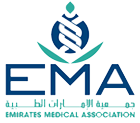Conscious sedation in dental clinic
Some children are very apprehensive, anxious and fearful in dental clinic. They cannot be treated and managed like cooperative and calm ones. Treatment of these children and restraining them can traumatize their emotions. As well it increases the risk of getting injured due to the child’s excessive movement. This procedure also done for special needs children.
What is conscious sedation?
As the name reveals in this procedure the person will not loose consciousness. The child breath normally, and respond positively to the verbal commands and physical stimulus. Sedative or calming medications are used to make the child calm, drowsy and less irritated to facilitate the medical or dental procedure.
What are they types of sedation used in dental clinics?
Different types of sedation can be used in dental office. Use of nitrous oxide gas (or known as laughing gas), medications oral or through vein.
Nitrous oxide sedation
Nitrous oxide or laughing gas is administered through a nasal mask (we call it space mask). The mask carries mixture of oxygen and nitrous oxide gasses. The gas is very safe and child recovers from the sedation very fast.
It takes nearly 5 minutes for the gas to become effective. Then the child will feel relaxed and also feels tingling on the fingertips. After finishing the procedure the child will be still breathing from the mask but the breathing gas is only oxygen and this will enhance recovery.
Even though nitrous oxide sedation is an option but it can not work on some children therefore other types of sedation such as oral and intravenous sedation might be used.
What is oral sedation?
As the name indicates they are administered through the mouth. The child will swallow the medication. Some children may spit the medication because of its bad taste therefore the pediatric dentist may mix it with juice for better acceptance.
The amount of medication to be given to each child will be calculated according to his/her weight.
There are different medications that are used for this purpose. It is better to ask the pediatric dentist regarding the medication. However, mixing two or three medications for oral sedation is not recommended.
In oral sedation the child need more care at home before and after the procedure.
What is IV (intravenous) sedation?
Same medications that are used in oral sedation can be delivered by injection into the vein. The advantage of this way of administration is that they are faster and more effective. Also the dentist can administer more medication if the procedure will take longer than expected.
Do the child need home preparation before the sedation?
At home preparation a night before sedation is very important. All the instruction given to you by dentist must be followed correctly.
Any change in health status of the child before the sedation session must be reported to the dentist few days before the sedation session.
If your giving your child any medication it should be reported because some medication affects the sedation.
These are some instructions:
• Child shouldabstain from food and drinks hours before the sedation. Child fasting will reduce the risk of vomiting during the sedation.
• Child should not have any solid fatty and fried food 8 hours before the sedation.
• Non –human milk, formula and toasted meal with clear liquids should be stopped 6 hours before the session
• Breast milk should be given last 4 hours before
• Clear fluids and water can be given 2 hours before the session
What should you do after sedation?
It is important to have another adult accompanying you to the sedation session so if your driving the other person will be watching the child.
• After sedation the child will be drowsy for hours and need close supervision.
• The child may fall asleep, keep him/her on his/her side and support the head with chin up position. Watch the child’s breathing every 3-5 minutes.
• It is very common that the child will feel nauseated and vomit after sedation. If vomiting occurs clear the mouth. If vomiting occurs very frequently you should contact the dentist and report the issue.
• A low grade raise in body temperature is common but if your child had high fever again you have to contact the dental office.
• Most o the times Local anesthesia is used for the dental procedure therefore watch the child for lip, cheek or tongue biting.
• Since the child will be drowsy and not having balance they should be prevented from activities that day until they fully recover.
• If the child feel hungry, start by giving him/her clear liquids and light food in small portion.




